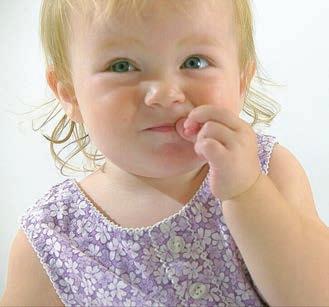
3 minute read
TIME to SIGN
By RACHEL HOGG
Picture this, you are taking your baby to the park, and you tell them this by using the signs for ‘walk’ and ‘park’. Your baby keeps signing back to you the words ‘cat’ and ‘bed’ and at first you think they have misunderstood. But then you remember that this time last week, when you were heading along this same road, you saw a cat sleeping on a wall. Your baby has remembered that encounter and wanted to share the memory. This was, in fact, a real experience between a mum and a baby and illustrates just how rewarding baby signing can be. The experts say it’s a tool capable of opening up dialogue between parents and children well before spoken conversation begins. It is important to distinguish ‘baby signing’ from ‘sign language’. British Sign Language (BSL) is specific to the deaf community and is a complete language in its own right. Baby signing, on the other hand, is the use of gestures with spoken language. It is not meant as a substitute for the spoken word, but rather as a means of supporting language and helping young children engage with their world. Baby signing involves parents using a limited number of simple gestures to support words as they are spoken. This underpins the natural development of your child’s speech.
Baby signing today has its roots in the US and is generally acknowledged to have started with the work of Dr Joseph Garcia (then an American Sign Language interpreter). He noticed that children of deaf friends who used ASL communicated by six months old. A similar concept was pursued by two University of California academics in the 1990s, Dr Linda Acredolo and Dr Susan Goodywn. They spent some 20 years developing an impressive body of evidence and techniques for baby signing. Here in the UK, baby signing has found many champions. Sasha Felix developed one of the first parent programmes, Sing and Sign, some 20 years ago. This has now introduced thousands of families to baby signing using music.

Baby signing does not require a huge investment of time and nor does it feel like an imposition. Gesturing when we speak is something most of us do instinctively. Baby signing also acts as a natural extension of children’s own gestural stage, which is an important part of speech and language acquisition in early years.
You can get started by reading books or watching online videos, but a popular (and social) option is to attend in-person classes with your baby. Whatever route you choose, once you have started to pick up the basics it’s easy to implement these throughout your daily life. Armed with this new simple language of gestures, you then pass on these communication tools to your child.
A popular age to start implementing baby signing is around 6 months – once an infant can sit up and use their hands to sign things out. Sasha Felix believes this is the best age to start, but some parents are keen to get going even earlier. Baby signing does not interfere with your child’s natural speech development. Once your child becomes verbal, they will typically start to phase out their signing. That said, children may still continue to include a sign for emphasis, out of habit or when they are being particularly insistent.

Family Benefits
The broader goal of baby signing is to help families to communicate, and the benefits are felt by parents and children alike. For parents, it is a good way of learning how to speak clearly and communicate words and concepts at a level infants can understand. It also gives vital, and fascinating insight into how children navigate the world. “It means they can communicate so much of what they are seeing, experiencing and feeling, so it’s a wonderful tool for bonding and getting to know your child”, says Sasha Felix.
While communication is the first goal, when a child has the opportunity and means to express their thoughts, feelings and desires this can also have a positive impact on behaviour. “I would never be so presumptuous as to say that it takes away the frustrations of a two-year-old,” says Sasha Felix. “Little people often have big feelings, and the goal of baby signing isn’t to get rid of those feelings but to help them better communicate them.”
So don’t expect a total absence of temper tantrums or meltdowns – there is no such thing as a weak-willed two-year-old. That said, arming them with extra communication skills does help with conflict de-escalation. Children are likely to pause to respond, and may also feel more understood through the process of signing to you.
Another big benefit is that baby signing naturally kick-starts the process of learning to recognise and label feelings, which is an important step in developing emotional intelligence.
While learning to hold a conversation with someone still in nappies may seem strange at first, baby signing is fun for both sides and establishes an environment of positive communication from the earliest years. Families that implement these simple language tools often continue to feel the benefits long after their little ones have moved on from signing and grown into talkative young people.
For more about baby signing classes and resources, visit singandsign.co.uk











